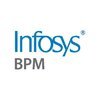Filter interviews by
ALTRAN SOLUTIONS INDIA Interview Questions and Answers
ALTRAN SOLUTIONS INDIA Interview Experiences
3 interviews found
Basic C programming questions and coding questions
More on the work done on previous project
(1 Question)
- Q1. How do you find the missing number in an array
- Ans.
Use XOR operation to find the missing number in an array of strings
Convert each string in the array to an integer using parseInt()
Use XOR operation on all the integers in the array and then XOR operation on all the numbers from 1 to n+1 (where n is the length of the array)
The result will be the missing number
Skills evaluated in this interview
Senior Software Engineer Interview Questions asked at other Companies
I was interviewed before May 2023.
(1 Question)
- Q1. Explain about query languages and its type
- Ans.
Query languages are used to communicate with databases to retrieve, update, and manage data.
Query languages are used to interact with databases to perform operations like retrieving, updating, and deleting data.
Types of query languages include SQL (Structured Query Language), NoSQL (Not Only SQL), and GraphQL.
SQL is a popular query language used for relational databases, while NoSQL is used for non-relational databases...
Software Developer Interview Questions asked at other Companies
I applied via Other and was interviewed in Sep 2020. There were 4 interview rounds.
Interview Questionnaire
1 Question
- Q1. Basics of C, Java, data structures, basic C programs on queues, linked list and many more..
Interview Preparation Tips
Software Engineer Interview Questions asked at other Companies
Top trending discussions






Interview questions from similar companies

I was interviewed in Jan 2025.
(5 Questions)
- Q1. What is one problem that interfaces solve that abstract classes do not?
- Q2. Write a program that takes a string of words, including spaces and special symbols, and returns each occurrence of a specified character, excluding spaces and special symbols.
- Q3. Could you explain how the autowired annotation functions internally?
- Q4. How does Spring Boot determine which data source to use for application execution when multiple data sources are available and no specific profile has been defined?
- Q5. What can you explain about the qualifier annotation?

Senior Software Test Engineer Interview Questions & Answers
KPMG Indiaposted on 6 Feb 2025
I was interviewed in Jan 2025.
(21 Questions)
- Q1. What is the Selenium architecture in relation to C#?
- Q2. What are the concepts of Object-Oriented Programming (OOP) in relation to your project?
- Q3. What are locators, and what are the different types of XPath?
- Q4. Have you ever managed cookies and caches in automation?
- Q5. How have you managed team members in your previous roles?
- Q6. How do you manage a situation where resources are limited and there is a deadline for completing testing?
- Q7. What is the defect life cycle?
- Q8. What is test scenario?
- Q9. What is the relationship between test coverage and a test matrix?
- Q10. How do you handle conflicting situations when working on priority-based tasks?
- Q11. What are the meanings of "Given," "When," and "Then" in Gherkin language? Please explain.
- Q12. What is the difference between a scenario and a scenario outline?
- Q13. What contributions have you made to the framework?
- Q14. What information do you include in a POM (Project Object Model) file?
- Q15. What are the differences between WebDriver and ChromeDriver?
- Q16. Syntax of xpath
- Q17. How do you manage dynamic elements on a webpage?
- Q18. How do you inspect a drop-down element and write the corresponding syntax for handling drop-downs in Selenium?
- Q19. What is the structure of a framework? Explain.
- Q20. Explain feature file linking in relation to the step definition file?
- Q21. What do you write in LINQ, what is its purpose, and how do you validate the database data against the user interface?
Interview Preparation Tips

Senior SAP Abap Consultant Interview Questions & Answers
EY Global Delivery Services ( EY GDS)posted on 25 Feb 2025
I was interviewed in Jan 2025.
(26 Questions)
- Q1. 1.what is LDB and Type of LDB?
- Ans.
LDB stands for Logical Database. There are two types of LDB - PNP and PCH.
LDB is a special feature in SAP ABAP that allows easy access to data from database tables.
PNP (Personnel Administration) LDB is used for HR-related data.
PCH (Payroll Accounting) LDB is used for payroll-related data.
- Q2. 2.what is concurrent employment ?
- Ans.
Concurrent employment refers to an individual holding multiple jobs simultaneously.
Occurs when an employee works for more than one employer at the same time
Each employer must be aware of the concurrent employment
May involve different roles or responsibilities in each job
Requires careful management of work schedules and potential conflicts
- Q3. 3.how we can link together if one employee have 2 pernr?is there any INFOTYPES to find?
- Ans.
Use infotype 0001 (Organizational Assignment) to link multiple pernrs for one employee.
Use infotype 0001 (Organizational Assignment) to find multiple pernrs for one employee
Check the relationship between the employee and the positions they hold
Look for any additional infotypes related to the employee's assignments
- Q4. 4. tell me the program flow in LDB report?
- Ans.
The program flow in LDB report involves data selection, data retrieval, data processing, and data display.
Data selection: Define selection criteria to fetch relevant data from the database.
Data retrieval: Use LDB functions to retrieve data from the database tables specified in the logical database.
Data processing: Perform any necessary calculations or manipulations on the retrieved data.
Data display: Present the proces...
- Q5. What are macros?
- Ans.
Macros are pre-defined code snippets that can be reused multiple times in a program.
Macros are defined using the #define directive in C programming.
They are used to simplify complex code by replacing repetitive code with a single macro.
For example, a macro can be used to define a constant value that is used multiple times in a program.
- Q6. 6. how to hit the payresult in report? 7. t code for see the payroll result for an employee? is there any indicator in payroll directory?
- Ans.
To hit the payresult in a report, use the function module 'HR_PAYROLL_RESULT_READ'. T-code 'PC_PAYRESULT' can be used to see payroll results for an employee.
Use function module 'HR_PAYROLL_RESULT_READ' to hit the payresult in a report
T-code 'PC_PAYRESULT' can be used to see payroll results for an employee
There is no specific indicator in the payroll directory, but you can access payroll results through various reports
- Q7. 8.In that payroll result,how we can identify result of perticular period? 9. In that payroll directory,what is difference of CRT,RT etc?
- Ans.
To identify payroll results for a particular period, you can use the payroll result table and filter by period. CRT and RT in payroll directory refer to different types of results.
You can identify payroll results for a particular period by querying the payroll result table and filtering by the period in question.
CRT in the payroll directory typically refers to current results, while RT may refer to retroactive results.
...
- Q8. 10. what is Retroactive?
- Ans.
Retroactive refers to something that applies to a period before it was enacted or implemented.
Retroactive changes can impact data that was entered in the past
In SAP, retroactive changes can be made to correct errors or update information
Retroactive adjustments may require additional testing to ensure data integrity
- Q9. 11. how to write payroll result in program ?there is some series of function module to read the payroll result.
- Q10. 12. upload INFOTYPES data?have you ever created BAPI or BDC to upload the Master data?
- Ans.
Yes, I have experience uploading INFOTYPES data using BAPIs and BDCs.
I have created BAPIs to upload master data in SAP using standard function modules or custom function modules.
I have used BDC (Batch Data Communication) to upload data into SAP by recording the manual steps and then automating them.
I have experience uploading INFOTYPES data such as personal data, organizational data, and time data.
I have worked on proj...
- Q11. 13. enhance INFOTYPES or not ? if yes ,then all INFOTYPES can be enhanced?
- Ans.
Yes, INFOTYPES can be enhanced but not all INFOTYPES are customizable.
INFOTYPES can be enhanced using custom fields or logic to meet specific business requirements.
Not all INFOTYPES can be enhanced as some are standard and cannot be modified.
Enhancing INFOTYPES requires thorough understanding of the data structure and business processes.
Examples of enhanced INFOTYPES include adding custom fields for additional informat
- Q12. 14. if I want to add field in INFOTYPES,what is the exact tab for enhance?
- Ans.
The exact tab for enhancing fields in infotypes is the 'Enhancement Category' tab.
Navigate to the 'Enhancement Category' tab in the infotype maintenance screen.
Select the appropriate enhancement category for adding a field to the infotype.
Enhancement categories include 'Customer Include', 'Customer Enhancement', and 'Customer Modification'.
- Q13. 15. PPCI is for OM related INFOTYPES.
- Q14. 16. how do I identify the time constraints of INFOTYPES? 17. time constraints "T" ?
- Ans.
Time constraints of INFOTYPES can be identified by checking the configuration settings in SAP system.
Time constraints in INFOTYPES are defined in the configuration settings of the SAP system.
Time constraint 'T' indicates that only one record can exist for a specific time period.
Time constraint 'T' is commonly used for master data like employee records in SAP HR module.
- Q15. 18. Number range of absence related and custom INFOTYPES ? - 2 series.
- Ans.
The number range for absence related and custom infotypes is in 2 series.
Absence related infotypes typically fall within number range 2000-2999
Custom infotypes can be assigned number range 9000-9999
- Q16. 19. how do I indentify what are the available badi that we process ?
- Ans.
To identify available BADI, use transaction code SE18 or SE19 and search for relevant BADI implementations.
Use transaction code SE18 or SE19 to search for BADI implementations
Enter the BADI name or description to find relevant implementations
Check the active implementations for the BADI to see which ones are being processed
- Q17. 20. Difference between CLASSICAL BADI AND NEW BADI?
- Ans.
Classical BADI is older and uses filter values, while new BADI is more flexible and uses multiple implementations.
Classical BADI uses filter values to determine when to trigger the enhancement, while new BADI uses multiple implementations.
New BADI allows for multiple implementations to be active at the same time, while classical BADI only allows one implementation at a time.
New BADI is more flexible and easier to use c...
- Q18. 21. How do identify the customer exit?
- Ans.
Customer exits can be identified by searching for specific function modules or by checking the enhancement spots in the system.
Search for function modules with naming convention starting with 'EXIT_'
Check enhancement spots using transaction code CMOD
Look for customer exits in the SAP menu path: Tools -> ABAP Workbench -> Development -> Enhancements
Customer exits can also be found in the SAP IMG (Implementation
- Q19. 22. what asynchronous and synchronous in BDC?
- Ans.
Asynchronous and synchronous in BDC refer to the timing of data processing in Batch Data Communication.
Asynchronous BDC processes data in the background without user interaction.
Synchronous BDC processes data in real-time with user interaction.
Asynchronous BDC is preferred for large data volumes to avoid system performance issues.
Synchronous BDC is suitable for smaller data sets where immediate feedback is required.
Exa...
- Q20. What is ABAP MEMORY AND GLOBAL MEMORY?
- Ans.
ABAP Memory is used for storing data during a single transaction, while Global Memory is used for storing data across multiple transactions.
ABAP Memory is used for storing data within a single transaction and is accessible only within that transaction.
Global Memory is used for storing data across multiple transactions and is accessible throughout the entire session.
ABAP Memory is cleared at the end of a transaction, wh...
- Q21. What kind of interfaces that you have worked on?
- Ans.
I have worked on various interfaces including IDOC, RFC, BAPI, and web services.
IDOC (Intermediate Document)
RFC (Remote Function Call)
BAPI (Business Application Programming Interface)
Web services
- Q22. You know how to write file in an application server (AL11),so what is the syntax to write the file into application server?
- Ans.
The syntax to write a file into the application server in SAP ABAP involves using the OPEN DATASET, TRANSFER, and CLOSE DATASET statements.
Use OPEN DATASET statement to open the file in application server
Use TRANSFER statement to write data into the file
Use CLOSE DATASET statement to close the file
- Q23. How do load the logo in adobe form?
- Ans.
To load a logo in an Adobe form, you can use the standard function module 'SSF_FUNCTION_MODULE_NAME' to get the function module name for the logo and then use 'CALL FUNCTION' to display the logo.
Use function module 'SSF_FUNCTION_MODULE_NAME' to get the function module name for the logo
Use 'CALL FUNCTION' to display the logo in the Adobe form
- Q24. What field need to select and what field need to bind in that?
- Ans.
Select the key field and bind it to the corresponding value field in SAP ABAP.
Select the key field based on the unique identifier for the data
Bind the key field to the value field that contains the relevant information
Ensure proper mapping between the key and value fields for accurate data retrieval
- Q25. In Om,how do I indentify who is the employee manager? is there any function module ? or can be features
- Ans.
You can identify the employee manager in SAP using the OM (Organizational Management) module.
In SAP, you can use the function module 'RH_STRUC_GET' to retrieve the organizational structure of an employee.
The manager of an employee can be identified by looking at the 'Reports To' field in the organizational structure.
You can also use features like 'Position' or 'Job' to determine the employee manager.
- Q26. DO YOU KNOW HRP1000,HRP1001,HRP1002? How do we see employee hierarchy of OM ..? ANY T CODE FOR THIS?
- Ans.
HRP1000, HRP1001, HRP1002 are tables in SAP used for employee hierarchy. T-code PPOME can be used to view employee hierarchy in OM.
HRP1000 stores the object ID of the organizational unit
HRP1001 stores the object ID of the position
HRP1002 stores the object ID of the employee
T-code PPOME can be used to view the employee hierarchy in Organizational Management (OM)
Interview Preparation Tips

I was interviewed in Jan 2025.
Social media ,Interests,Behaviour
(3 Questions)
- Q1. What Factors Would infrom ur approach to targeting the right people on social media in order to divice sales
- Q2. What iş different between confidence and overconfidence
- Q3. What is the mortgage loans?
Interview Preparation Tips

I was interviewed in Jan 2025.
(5 Questions)
- Q1. Could you elaborate on your roles and responsibilities in your previous employment?
- Q2. What was your role in the project, specifically related to data transformation and dashboard creation?
- Q3. How do you optimize and manage large datasets, and what data sources do you utilize to obtain this data?
- Q4. Guesstimates like how many traffic signals are there in Noida.
- Q5. The interviewer asked SQL questions related to window functions, joins, and advanced aggregations, such as running sum and rolling sum.
(1 Question)
- Q1. Second round is also a technical round and similar to first round . Medium to high level sql questions and questions related to the project you're working on and Guesstimates will be asked by the interview...
(1 Question)
- Q1. Project manager will take the third round interview and inquire about your knowledge of the company, and some technical and scenario-based questions related to decision-making and problem-solving approach.
(1 Question)
- Q1. Final round will be an HR round.
Interview Preparation Tips

CA Article Assistant Interview Questions & Answers
Amazon Development Centre Indiaposted on 5 Feb 2025
Write a 1,200-word article titled "Mental Health Awareness in Hawai‘i: Challenges, Progress, and Support." The article should be written in simple, clear, and engaging language for a general audience. It should focus on:
1. Introduction (150-200 words)
Define mental health and its importance.
Mention Hawai‘i’s beautiful environment but highlight that mental health issues still exist.
Briefly state the challenges and efforts being made to improve mental health care in Hawai‘i.
2. Mental Health Challenges in Hawai‘i (400-500 words)
Financial Stress: High cost of living and its impact on mental well-being.
Geographic Isolation: Limited mental health resources on neighbor islands.
Cultural Stigma: Traditional beliefs that prevent people from seeking help.
Youth Mental Health Issues: High suicide rates and school-related stress.
3. Progress and Solutions (400-500 words)
Telehealth and Expanded Services: Online therapy and community health programs.
Culturally Sensitive Therapy: Combining modern psychology with traditional Hawaiian healing.
Suicide Prevention Efforts: Crisis hotlines, school counseling, and support groups.
Encouraging Open Conversations: Mental health awareness campaigns and community events.
4. Where to Find Help (150-200 words)
List mental health hotlines, organizations, and support groups available in Hawai‘i.
Encourage readers to seek help if they or someone they know is struggling.
5. Conclusion (150-200 words)
Emphasize the importance of breaking the stigma around mental health.
Highlight the progress being made and the need for continued awareness.
Offer a hopeful message that help is available, and seeking support is a sign of strength.
The article should be informative, empathetic, and solution-focused, encouraging readers to take mental health seriously and seek support when needed.
Mental Health Challenges in Hawai‘i (400-500 words)
Financial Stress: High cost of living and its impact on mental well-being.
Geographic Isolation: Limited mental health resources on neighbor islands.
Cultural Stigma: Traditional beliefs that prevent people from seeking help.
Youth Mental Health Issues: High suicide rates and school-related stress.
Mental Health Awareness in Hawai‘i: Challenges, Progress, and Support
Introduction
Mental health is a growing concern across the world, and Hawai‘i is no exception. While the islands are known for their beautiful landscapes, warm weather, and relaxed culture, many residents face mental health challenges. Factors such as the high cost of living, geographic isolation, cultural stigma, and limited healthcare access can make it difficult for people to seek help.
This article explores the state of mental health in Hawai‘i, the challenges people face, and the available resources for those seeking support. Raising awareness and encouraging open conversations can help break the stigma and ensure that everyone receives the care they need.
---
Mental Health Challenges in Hawai‘i
1. High Cost of Living and Financial Stress
Hawai‘i has one of the highest costs of living in the United States. The high price of housing, food, and utilities puts financial pressure on many residents. According to a report by the Aloha United Way, nearly 42% of households in Hawai‘i are struggling to meet basic needs. This financial stress can lead to anxiety, depression, and other mental health issues.
Many families live paycheck to paycheck, worrying about rent, bills, and food expenses. The fear of job loss or unexpected medical costs can also contribute to high stress levels.
2. Geographic Isolation and Limited Access to Care
Hawai‘i’s unique geography creates additional mental health challenges. Being thousands of miles away from the U.S. mainland, the islands have limited healthcare providers and mental health professionals. Many communities, especially on neighbor islands like Moloka‘i and Lana‘i, have very few mental health services.
For those in rural areas, traveling to another island for therapy or psychiatric care can be expensive and time-consuming. Telehealth services have helped improve access, but not everyone has the internet access or technology needed for virtual therapy sessions.
3. Cultural Stigma and Traditional Beliefs
Mental health stigma remains a significant issue in Hawai‘i. In many cultures, including Native Hawaiian, Filipino, and other Asian communities, discussing mental health struggles is seen as shameful or a sign of weakness. Many people hesitate to seek help because they fear judgment from family or society.
Some traditional beliefs emphasize self-reliance and resilience, which can discourage individuals from opening up about their struggles. Instead of seeking professional help, some people turn to family, religion, or traditional healing practices. While these support systems are valuable, they may not always be enough to address serious mental health conditions like severe depression or anxiety disorders.
4. Youth and Mental Health
Young people in Hawai‘i face unique mental health challenges. According to the Hawai‘i State Department of Health, suicide is the leading cause of death for young people aged 15–24 in the state. Many teens and young adults struggle with stress, academic pressure, bullying, and social isolation.
The rise of social media has also affected mental health, with many young people experiencing cyberbullying or unrealistic beauty and lifestyle expectations. Despite these challenges, many schools and organizations are working to provide better mental health education and support for students.
---
Progress and Solutions: How Hawai‘i is Addressing Mental Health
1. Expanding Mental Health Services
In recent years, Hawai‘i has been working to improve mental health services. Some key initiatives include:
Telehealth Programs: Online therapy and counseling services help connect people with mental health professionals, especially in rural areas.
Community Health Centers: Organizations like the Waikīkī Health Center and Hawai‘i Behavioral Health provide low-cost or free mental health services.
State and Nonprofit Support: The Hawai‘i Department of Health offers crisis intervention programs, while groups like Mental Health America of Hawai‘i work to increase awareness and provide resources.
2. Promoting Cultural Sensitivity in Therapy
Many organizations now focus on culturally appropriate mental health care. This means providing therapy that respects different cultural backgrounds and traditions. For example, some therapists incorporate Native Hawaiian healing practices like ho‘oponopono (a traditional conflict resolution and forgiveness process) into mental health treatment.
By combining modern psychology with traditional healing, mental health professionals can help more people feel comfortable seeking care.
3. Suicide Prevention Efforts
To address the high suicide rates, Hawai‘i has increased efforts in suicide prevention. Some programs include:
The Hawai‘i CARES Crisis Line: A 24/7 hotline providing support for people in distress.
School-Based Mental Health Programs: Many schools now offer counseling services and mental health education to help students recognize and address emotional struggles.
Community Workshops and Support Groups: Organizations host events to teach coping skills, stress management, and ways to support loved ones struggling with mental health issues.
4. Encouraging Open Conversations
Breaking the stigma around mental health starts with conversation. Many local groups, churches, and community centers now hold mental health awareness events to encourage people to talk about their experiences. Social media campaigns and public figures also play a role in normalizing discussions about mental health.
By sharing personal stories and showing that mental health struggles are common, Hawai‘i’s residents can create a more supportive and understanding community.
---
Where to Find Help in Hawai‘i
If you or someone you know is struggling with mental health issues, there are many resources available:
Hawai‘i CARES Crisis Line: XXXXX (O‘ahu) or XXXXX (Neighbor Islands) – Available 24/7 for crisis support.
Mental Health America of Hawai‘i: Offers support groups, educational programs, and resources for individuals and families.
The National Suicide Prevention Lifeline: 988 – A free, confidential helpline for anyone in distress.
Hawai‘i Behavioral Health: Provides therapy, counseling, and behavioral health services across the state.
Community Health Clinics: Many local clinics offer low-cost or free mental health services.
If you are unsure where to start, calling the Hawai‘i CARES Crisis Line can connect you to the right resources.
---
Conclusion
Mental health awareness in Hawai‘i is more important than ever. While challenges like financial stress, cultural stigma, and limited healthcare access remain, progress is being made through expanded services, suicide prevention programs, and open conversations.
By encouraging mental health education, reducing stigma, and increasing access to care, Hawai‘i can create a healthier and more supportive community. No one should struggle alone—help is available, and seeking support is a sign of strength.
If you or a loved one are facing mental health challenges, don’t hesitate to reach out for help. Your well-being matters, and there is always hope for healing and recovery.
Mental Health Awareness in Hawai‘i that highlight both the challenges and solutions.
Example:
1. "Despite Hawai‘i’s natural beauty, many residents struggle with mental health due to financial stress, cultural stigma, and limited healthcare access."
2. "To improve mental well-being, we need more open conversations, better mental health services, and culturally sensitive support systems."
Interview Preparation Tips

(20 Questions)
- Q1. Explain the difference between ArrayList and LinkedList in Java. When would you choose one over the other?
- Q2. What are the advantages and disadvantages of using Java’s synchronized keyword for thread synchronization? Can you explain how the ReentrantLock compares to synchronized?
- Q3. What is the difference between == and .equals() in Java? When should each be used, and what issues can arise from improper usage?
- Q4. How does the Java garbage collector work? Can you describe the different types of garbage collection algorithms available in Java?
- Q5. What are the main features of Java 8? Can you explain how lambdas and the Stream API have changed the way Java applications are written?
- Q6. Describe the differences between checked and unchecked exceptions in Java. Provide examples and explain how to handle them properly.
- Q7. What is the Java Memory Model, and how does it affect multithreading and synchronization? How does volatile help ensure memory visibility?
- Q8. Can you explain the difference between method overloading and method overriding in Java? Provide examples where each should be used.
- Q9. What are functional interfaces in Java? How do they work with lambda expressions? Provide an example of a custom functional interface.
- Q10. What is a Java Stream, and how does it differ from an Iterator? Explain how Streams can be used to process collections efficiently.
- Q11. Explain the concept of immutability in Java. How does the String class achieve immutability, and what are the advantages of immutable objects?
- Q12. What is the difference between final, finally, and finalize in Java? Provide examples to illustrate their usage.
- Q13. Explain the Singleton design pattern in Java. How can you implement it safely to ensure thread safety?
- Q14. What are Java annotations, and how are they used in frameworks like Spring? Explain the difference between built-in and custom annotations.
- Q15. How do Java Streams handle parallel processing? What are the potential pitfalls of using parallel streams, and how can they be mitigated?
- Q16. Explain the difference between ArrayList and LinkedList in Java. ArrayList is implemented as a dynamic array, while LinkedList is a doubly linked list. ArrayList provides fast random access (O(1) complexi...
- Q17. What are the advantages and disadvantages of using Java’s synchronized keyword for thread synchronization? The synchronized keyword ensures that only one thread can access a block of code at a time. It pr...
- Q18. What is the difference between == and .equals() in Java? == checks for reference equality, meaning it compares memory addresses. equals() checks for value equality, which can be overridden in user-defined...
- Q19. How does the Java garbage collector work? Garbage collection in Java automatically reclaims memory occupied by unused objects. The JVM has different types of GC algorithms, including Serial, Parallel, CMS...
- Q20. What are the main features of Java 8? Java 8 introduced lambda expressions, enabling functional-style programming. The Stream API allows efficient data processing with map, filter, and reduce operations. ...
ALTRAN SOLUTIONS INDIA Interview FAQs
Tell us how to improve this page.
Interview Questions for Popular Designations
- Senior Executive Interview Questions
- Analyst Interview Questions
- Software Engineer Interview Questions
- Consultant Interview Questions
- Associate Software Engineer Interview Questions
- Java Developer Interview Questions
- Test Engineer Interview Questions
- Senior Software Engineer Interview Questions
- Show more
ALTRAN SOLUTIONS INDIA Interview Process
based on 2 interviews
Interview experience
Interview Questions from Similar Companies
ALTRAN SOLUTIONS INDIA Reviews and Ratings
based on 3 reviews
Rating in categories
|
Technical Lead
5
salaries
| ₹15 L/yr - ₹24 L/yr |
|
Consultant
4
salaries
| ₹3.7 L/yr - ₹7.5 L/yr |
|
Network Engineer
4
salaries
| ₹2.2 L/yr - ₹5.5 L/yr |

TCS

Wipro

Infosys

HCLTech
- Home >
- Interviews >
- ALTRAN SOLUTIONS INDIA Interview Questions











